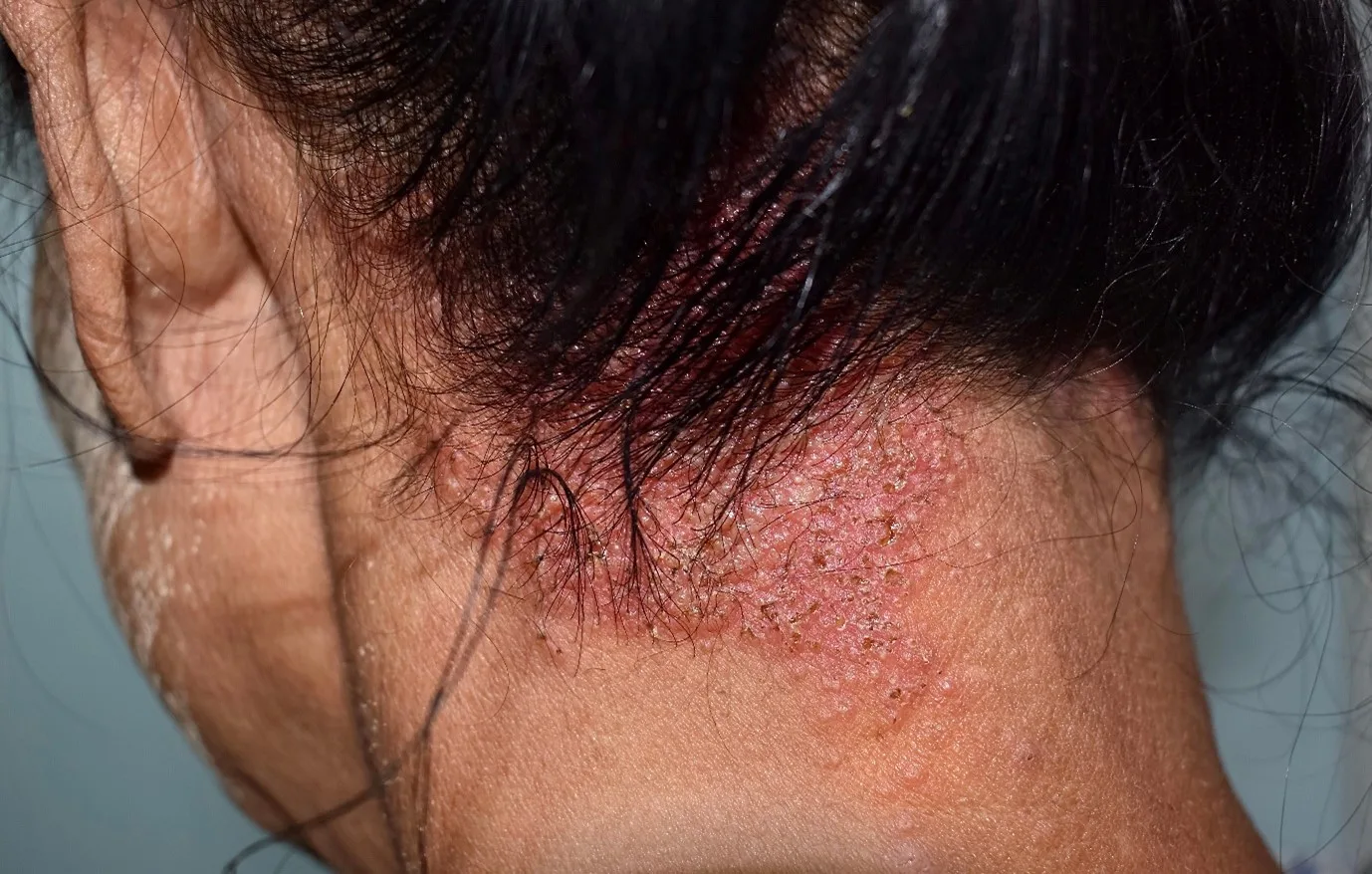Seborrheic Dermatitis on Scalp: Causes, Symptoms and Treatments
Find out about the causes of Seborrheic Dermatitis, along with the symptoms and treatments to look out for.

Seborrheic Dermatitis Symptoms
Treatment For Seborrheic Dermatitis
Seborrheic Dermatitis sounds like a disease which is so severe that it could lead to weeks in a hospital. But it’s a common skin condition that is even found on infants, where it is known as cradle cap. It is considered as a chronic form of Eczema and is often mistaken for dandruff.
It takes on the shape of red patches of raised skin, which is associated with itching and burning sensations. If the patches are in a visible area, it can almost make you never want to step out again. But you can change the narrative around this ailment and find a way out.
Seborrheic Dermatitis Causes
The seborrheic dermatitis reasons are actually the same as dandruff - Excessively oily skin and fungi. Your body is covered in sebaceous glands that secrete sebum or oil to protect your skin. The highest density of these glands is on your face and scalp, where the seborrheic dermatitis causes most trouble.
Fungi from the Malassezia genus are naturally found on your scalp, which feed on this oil. Excessive build-up of this oil allows for the growth of this fungus, which triggers your immune system into overreacting. This irregular response causes the rate of skin cell turnover to increase dramatically, leading to inflammation and large clumps of cells building up on the surface of the scalp.
Seborrheic dermatitis scalp can also be aggravated by:
• Obesity
• Higher stress levels
• Environmental pollution
• Sudden changes in weather temperature
• A reaction to medication
• Hormonal fluctuations
• Compromised immune system
You might even be genetically predisposed to a bout of seborrheic dermatitis.
It is important to note that seborrheic dermatitis is not caused by poor personal hygiene. Washing your scalp regularly with a good scalp shampoo can reduce the oil levels. But it does not attack the root of the problem, unless you use the right products.
Seborrheic Dermatitis Symptoms
This skin condition is often mistaken for psoriasis, hair dandruff, eczema or even allergic reactions. The characteristics of these ailments often overlap and thus the confusion.
Seborrheic dermatitis is symbolised by:
• Redness of varying colours that can take the shape of small spots.
• Persistent itching which can turn severe.
• Scaly patches of skin, often near the hair line.
• Oiliness which is usually on or around the scaly skin.
• Flaking of dead skin cells.
Although it has similarities to dandruff, the difference is that seborrheic dermatitis generally lasts longer. It can flare up at any moment and is aggravated by a host of reasons.
It is also not restricted to the scalp. Seborrheic dermatitis can break out on your face, nose, eyebrows, ears, chest, groin, navel, etc. Basically, wherever you have sebaceous glands, this condition can dig its claws in.
Treatment For Seborrheic Dermatitis
It’s easy to confuse seborrheic dermatitis with dandruff so the first step is to rule out dandruff. If this condition has spread to your torso or any other part of your body, it usually implies that this is not dandruff. But even then, you’re better off getting it confirmed by a professional.
There are a bunch of things that you can do to tackle seborrheic dermatitis on hair and scalp. The most common solution for this ailment is an anti-dandruff shampoo. Since the cause of dandruff and seborrheic dermatitis is the same, use a shampoo that is designed to tackle this problem.
Try the Head and Shoulders Active Protect 2in1, which combines the benefits of a shampoo and conditioner together. It can clear your scalp of dandruff causing germs and restore any damaged strands . You can also use the Head and Shoulders Neem, that is built to clean and protect your scalp from the dandruff causing germs.
Use an anti-dandruff shampoo regularly and monitor the affected area to see if the symptoms subside. But if the itching is severe and doesn’t allow you to sleep, or if the symptoms don’t subside, or if your home remedies aren’t working, then it is important to visit a dermatologist.
The dermatologist can confirm if these are seborrheic dermatitis symptoms, or something else. Even though you might think the above-mentioned symptoms are clearly pointing towards seborrheic dermatitis, it is always recommended that you get a confirmation from the dermatologist before trying any self-remedy. These are options that a doctor might recommend :
• Anti-fungal creams and ointments (Some can be bought Over the counter).
• Oral medication in extreme cases.
• Light therapy which utilises UV light.
• Products with active compounds that can treat the cause of seborrheic dermatitis, like zinc pyrithione, coal tar, salicylic acid, ketoconazole, selenium sulphide, etc.
• Steroid creams for topical application.
If you’re lucky, seborrheic dermatitis can sometimes go away on its own. Nobody wants to wake up with those patches on their skin. But it’s an ailment that has various forms of treatment, giving you the opportunity to lead a stress-free life.
All reference on this page to *Upto 100%, **Germs, ***Immunity and ****No. 1 shampoo refer to * removing visible flakes only, with regular usage, at least 3x per week, **related to dandruff, imbalance of bacteria, with regular use, ***protection from dandruff causing germs and ***according to P&G calculation based on Nielsen data from June’18 to July’19 respectively.


